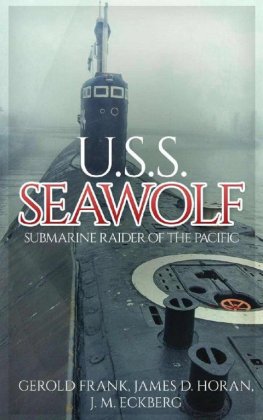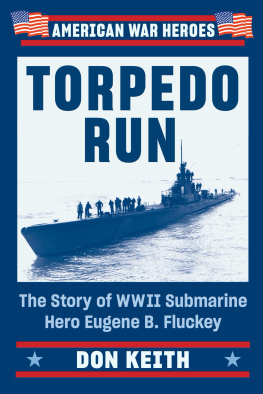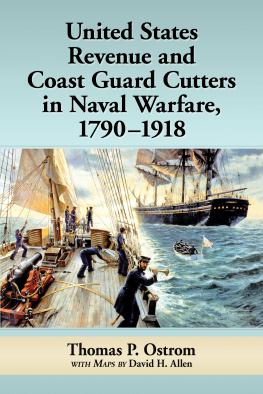
Published by The History Press
Charleston, SC 29403
www.historypress.net
Copyright 2014 by Jake Klim
All rights reserved
First published 2014
e-book edition 2014
ISBN 978.1.62585.034.8
Library of Congress Cataloging-in-Publication Data
Klim, Jake.
Attack on Orleans : the World War I submarine raid on Cape Cod / Jake Klim.
pages cm
Includes bibliographical references and index.
print edition ISBN 978-1-62619-490-8
1. World War, 1914-1918--Massachusetts--Orleans (Town) 2. World War, 1914-1918--Naval operations--Submarine. 3. World War, 1914-1918--Naval operations, German. 4. Orleans (Mass. : Town)--History, Naval--20th century. 5. Cape Cod (Mass.)--History, Naval--20th century. I. Title.
D570.85.M41O745 2014
940.4514--dc23
2014017445
Notice: The information in this book is true and complete to the best of our knowledge. It is offered without guarantee on the part of the author or The History Press. The author and The History Press disclaim all liability in connection with the use of this book.
All rights reserved. No part of this book may be reproduced or transmitted in any form whatsoever without prior written permission from the publisher except in the case of brief quotations embodied in critical articles and reviews.
This book is dedicated to Eric Lingard.
CONTENTS
ACKNOWLEDGEMENTS
First, this book would never have come to fruition without the help and support of the Orleans Historical Society (OHS) and its dedicated director, Tamsen Cornell. The OHS graciously provided photos, newspaper articles and firsthand accounts from eyewitnesses, most of which was recorded years before I was born.
William Quinn, Cape Cods unofficial shipwreck historian and guru of all things Orleans, was a wealth of information and also provided his collection of historic photos for use in this book. Sadly, Mr. Quinn passed away shortly before this book was published. With his passing, Cape Cod lost a great historian.
Glenn Stockwell, Richard Boonistar and Richard Ryder were always willing to lend their expertise on matters relating to Cape Cods Lifesaving Service, and I thank them for that.
I would also like to thank the following archives and libraries for answering questions, providing insight and supplying photographs: the U.S. Coast Guard Historians Office; the Gloucester Lyceum & Sawyer Free Library; the U.S. Coast Guard Academy; the W.B. Nickerson Cape Cod History Archives; the Middlesex School; the Cape Cod National Seashore; the Gloucester City Archives; the Cape Ann Museum; the National Archives in Washington, D.C.; the German U-boat Museum and Archive; and NausetHeights.org.
Cheryl Pierce Clarkin, whose great-grandfather Robert Pierce was the keeper at Station Number 40 in Orleans, provided information and photographs about her relative. Likewise, Stephen Hopkins, the son of Reuben Hopkins, one of the surfmen involved in the rescue, was gracious to supply a photo and information about his father.
Thanks to Jonathon Amato for translating German documents, to Chuck Kacsur for producing the maps and graphics and to Shannon ONeill for her legal counsel.
Susan Downman, a distant relative of Eric Lingard, contacted me after this book was published and passed along information, previously unknown to me, for this updated edition.
I would also like to thank the numerous friends and colleagues who read drafts of my chapters and provided their feedback and assisted in the acquisition of articles and literature: Peter Silverman, Katherine Mischenko, Bert Rodriguez, Dianne Langeland, Dr. Clayton Laurie, Emily Norton, Jenny Curtis, Katie Andreassi, Brian Leonard, Will Fink, Christiam Camacho, Suran De Silva, Brian Knowlton, Suzanne Mullin Koppanen, Shaun Johnson, Jordan Snyder and Jessi Steward.
Finally, I need to thank my familymy parents, Jack and Cathy, and my sister, Katefor their love and support.
INTRODUCTION
The dorsal fin, which broke the surface just fifteen feet off Nauset Beach in Orleans, was indeed an ominous sight. The great white shark, estimated to measure twelve to fifteen feet long, was casually making its way along the arm of Cape Cod, Massachusetts. On shore, hundreds of beachgoers, mouths agape, pointed and stared. Many were in the midst of their summer vacations, and the spectacle before them was unlike anything they had ever seen before. Due to the increased number of sightings, town officials barred sunbathers from entering the ocean, but ironically, these warnings did little to dissuade the curious from descending toward the waters edge.
Nearly one hundred years earlier, on a hot, hazy morning during the summer of 1918, a similar crowd gathered at Nauset Beach. Although it was three miles offshore, the big tin whale, as it was described by one witness, was over two hundred feet in length and visible to everyone on the beach. Like the great white shark, its presence so close to shore was disconcerting, but bystanders could not look away. Instead, like a magnet, the leviathan attracted the attention of upward of one thousand curious onlookers.
Today, high above the beach, nestled in the bluff, a modest sign marks the occasion:
Three miles offshore, in the direction of the arrow, was the scene of attack of a German submarine on a tug and barges July 21, 1918. Several shells struck the beach. This is the only section of the United States coast shelled by the enemy during World War I.
Historical sign above Nauset Beach. Courtesy of Joe Navas/Organic Photography.
Despite the best efforts of the kind-hearted citizens who erected the sign, it is essentially invisible to those sunbathing on the beach below. In fact, the marker is located on a private stairwell. To the countless throngs who frequent Nauset Beach on any given summer day, what happened here during the last summer of the First World War remains largely unknown, despite the events historical significance.
What follows is the true story of an interesting and forgotten anecdote in American history known as the Attack on Orleans. It is also a story about two first responders and the roles their respective outfits played during the attack. One was a native Cape Coddera seaman from another era, born a year after the end of the Civil Warwho was destined to make his living off the sea. The other was an ambitious young man, not yet thirty years old, born into a life of privilege and who eventually found his way into the cockpit of a seaplane. Finally, this is a story about the small town of Orleans, which sits on the elbow of Cape Cod, ever geographically vulnerable to threats from the sea.
CHAPTER 1
A SURFMAN NAMED PIERCE
The life savers work is always arduous, often terrible.
John W. Dalton
The town of Orleans is located on the elbow of Cape Cod, which resembles a flexed arm protruding into the Atlantic Ocean. Like the sands on its beaches, the borders have shifted over the years, but today, Orleans encompasses approximately twenty-one square miles, one-third of which touches salt water. The small coastal hamlet is squeezed between Cape Cod Bay to the west and the vast Atlantic Ocean to the east, which splashes against Nauset Beach, a ten-mile expanse that extends south to neighboring Chatham. Pleasant Bay rests to the south of Orleans, giving the town a curious shape, as if that part of it has slowly been eroded by the sea over time. The town is peppered with saltwater ponds and littered with geographical features like necks, points and narrows. Countless coves, rivers and marshes rise and drain with the daily floods, giving the air the taste of salt and the smell of tide.








